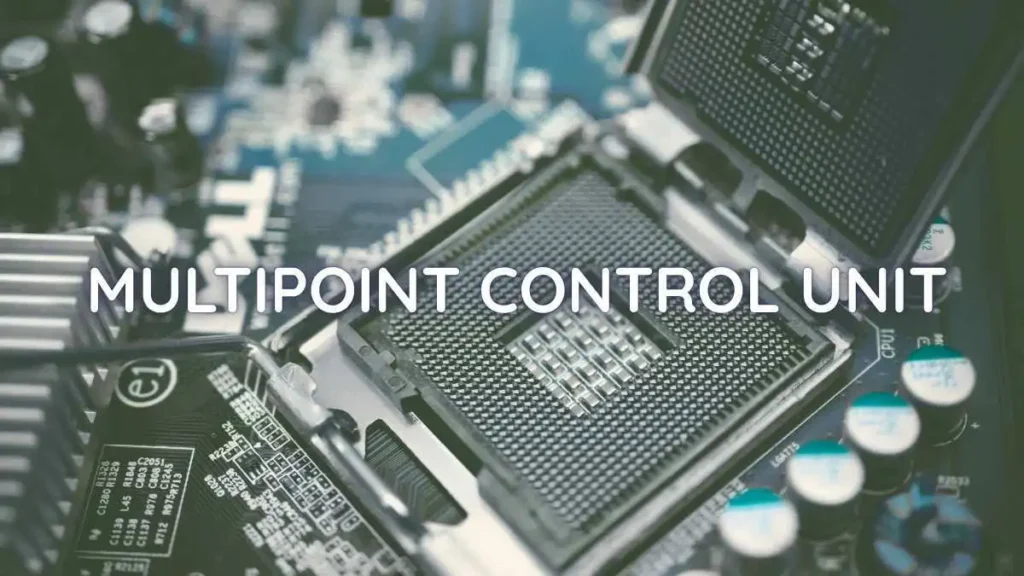TECH
Multipoint Control Unit: Core of Video Conferencing Tech

A Multipoint Control Unit (MCU) is a central hub in video conferencing that processes and redistributes streams, ensuring seamless communication for multiple participants, particularly in secure, enterprise, and legacy system environments.
Introduction
In today’s era of global connectivity, real-time communication tools play a critical role in bridging geographical gaps. Whether it is a corporate meeting across continents, a telemedicine consultation, or a virtual classroom, the underlying technology that makes large-scale video collaboration possible often relies on a Multipoint Control Unit (MCU). Unlike traditional point-to-point calls, where only two participants can connect, an MCU acts as a centralized hub that manages multiple audio, video, and data streams, ensuring a seamless and interactive conferencing experience.
Table of Contents
What is a Multipoint Control Unit (MCU)?
A Multipoint Control Unit (MCU) is a dedicated device, or increasingly, a software-based service, that connects three or more participants into a unified video conference. Instead of forcing each participant’s device to process multiple streams, the MCU acts as a traffic hub and media processor:
- It receives streams from all endpoints.
- It decodes, mixes, and composites them.
- It re-encodes a single optimized output stream back to participants.
For example, in a 12-participant call using a Polycom RMX MCU, each endpoint receives just one mixed video feed instead of 11 individual feeds.

Key Features of Modern MCU Technology
- Dynamic Video Layouts: From 2×2 grids in education setups to large auditoriums requiring 7×7 tiled layouts, MCUs like Cisco Meeting Server offer flexible configurations.
- Advanced Audio Processing: Built-in echo cancellation, noise suppression, and multi-party audio mixing ensure clarity in high-participant calls.
- Protocol Interoperability: Support for H.323, SIP, and WebRTC, enabling older video room systems to connect with modern browser-based clients.
- Data Collaboration Tools: Secure screen sharing, document transfer, and even digital whiteboarding in enterprise deployments.
MCU vs. SFU: A Technical Comparison
| Aspect | MCU (Multipoint Control Unit) | SFU (Selective Forwarding Unit) |
| Processing | Decodes, mixes, and redistributes streams centrally. | Forwards multiple streams without mixing. |
| Bandwidth Usage | Low on the client side (receives 1 stream). | Higher on the client side (receives multiple streams). |
| Scalability | Limited by server processing capacity. | Scales efficiently in cloud-native environments. |
| Latency | Slightly higher (decoding + mixing overhead). | Lower latency due to simple forwarding. |
How a Multipoint Control Unit Works in Practice
A typical MCU has two core subsystems:
- Multipoint Controller (MC): Manages call setup, signaling, participant entry/exit, and conference policies.
- Multipoint Processor (MP): Handles the heavy lifting: decoding, mixing, encoding, and distribution of video/audio streams.
Workflow Example:
- A hospital connects five remote clinics via Cisco MCU 5300.
- Each endpoint sends its video/audio to the MCU.
- The MCU composes a secure gallery view showing all participants.
Limitations of MCU-Based Conferencing
- High Infrastructure Costs: Hardware MCUs like Cisco TelePresence MSE 8510 can cost upwards of $100,000.
- Scalability Bottlenecks: A single MCU is bound by CPU/GPU capacity. Large deployments often require cascading multiple units.
- Latency Overhead: The mixing process adds 100 to 300 ms of latency, which can affect real-time responsiveness.

Real-World Applications of MCU Technology
- Corporate Enterprises: Global banks use MCUs for secure boardroom-to-boardroom communication, often with encrypted archives for audit purposes.
- Healthcare: In India, Apollo Hospitals deployed MCU-based conferencing to connect remote specialists with rural clinics, ensuring consistent quality under limited bandwidth.
- Education: Universities in Europe use MCU-powered classrooms to integrate legacy lecture hall systems with modern e-learning platforms.
Choosing Between MCU and Alternatives
The decision comes down to compliance, cost, and scale:
- Choose MCU if your organization requires interoperability with legacy hardware, tight security, and centralized management.
- Choose SFU if scalability and cost-efficiency are your top priorities (e.g., startups, SaaS platforms, open education).
- Hybrid Models are increasingly common: an enterprise may run an on-premises MCU for board meetings while using Zoom or Teams for day-to-day collaboration.
The Future of MCU in Video Conferencing
The future of Multipoint Control Units (MCUs) lies in hybrid and cloud-native deployments, where they integrate with SFU technology to balance scalability, interoperability, and security. Advancements in AI, 5G, and edge computing will make MCUs smarter, faster, and more adaptive. Rather than becoming obsolete, MCUs will evolve into specialized, secure collaboration hubs supporting enterprises, healthcare, education, and government in an increasingly connected, cloud-driven world.
Best Practices for Deploying an MCU
- Evaluate Bandwidth Needs: Ensure WAN links can sustain expected participant loads.
- Plan Redundancy: Deploy backup MCUs for mission-critical environments like healthcare.
- Prioritize Security: Use encryption (AES 256), firewall rules, and role-based access control.
- Opt for Virtualized MCUs: They offer better ROI and long-term flexibility compared to hardware-only units.
FAQs
Q1. What is the main role of an MCU in video conferencing?
It acts as a central hub that decodes, mixes, and redistributes video/audio streams so all participants experience synchronized, high-quality communication.
Q2. How is MCU different from SFU?
MCU mixes streams centrally and redistributes them, while SFU forwards multiple raw streams. This makes MCUs better for low-bandwidth endpoints, while SFUs excel at scalability.
Q3. Is MCU technology outdated?
No. While SFUs power modern cloud platforms, MCUs remain crucial in industries that demand security, compliance, and legacy interoperability.
Final Thoughts
The Multipoint Control Unit is not just a relic of early telepresence; it is a cornerstone of secure, enterprise-grade, and compliance-driven video conferencing. While SFU-powered platforms dominate the mainstream, MCUs continue to thrive in industries where reliability and interoperability outweigh cost and scalability.
-

 FRIENDSHIP MESSAGES2 months ago
FRIENDSHIP MESSAGES2 months ago100+ Heart Touching Sorry Messages for Friends
-

 ANNIVERSARY WISHES6 months ago
ANNIVERSARY WISHES6 months ago100+ Beautiful Engagement Anniversary Wishes Messages and Quotes
-

 BIRTHDAY WISHES6 months ago
BIRTHDAY WISHES6 months ago300+ Happy Birthday Wishes for Brother | Heart Touching Happy Birthday Brother
-

 BIRTHDAY WISHES6 months ago
BIRTHDAY WISHES6 months ago200+ Unique Birthday Wishes for Your Best Friend to Impress on Their Big Day


































